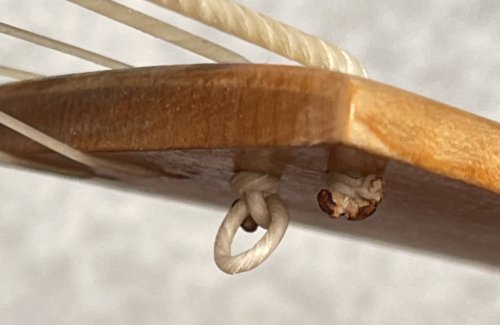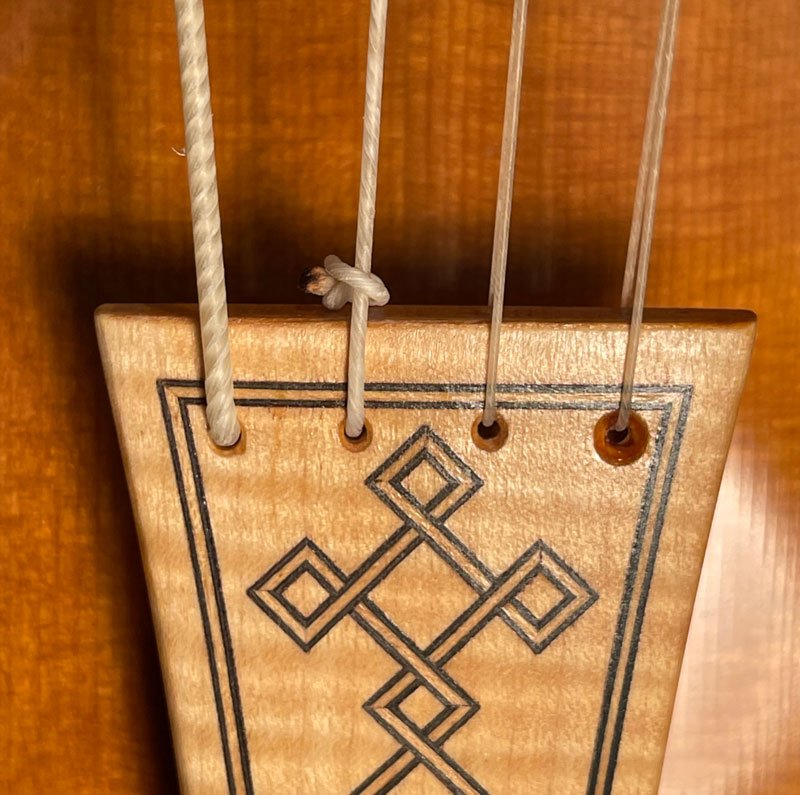< Back to Articles
Tying String Knots
Pass the end of the string through a loop to make an overhand knot as in Figure A.
Bring the end around and through the knot as in Figure B.
Burn the end so the end has a mushroomed shape.
Pull the string to tighten the knot against the end as in Figure C.
All strings require a knot or ball end at the end to hold them onto the instrument's tailpiece. The type of knot needs to include a loop, and it can be unclear how best to handle that feature. (Gamut gut/metal-wound strings come with a 3-D printed ball end by default; knotted ends on wound strings are being phased out.)
There are two ways the loop can be used in attaching the string. One way is to ignore the loop and simply pull the knot against the underside of the tailpiece, as in the picture below.
The second way is to pull the loop to the front of the tailpiece, passing the string through it. That will bind the end to the tailpiece, as in the images below.
Either method works well, so you can use the method that best suits your needs and aesthetics. For more information about tying Gamut strings, visit our Articles page.



